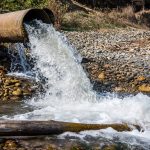Soil Vapor Testing for Safer Urban Development
The Importance of Soil Vapor Testing for Urban Safety
Harmful gasses emitted by soil can pose significant risks. Soil vapor testing has gained momentum in recent years as a tool to assess and mitigate underground contamination, particularly with new construction, to ensure the health and environmental safety of an area before it is used for commercial or residential purposes. Understanding the risks associated with vapor intrusion is a key reason why soil vapor testing is crucial for urban development projects.
So, what is soil vapor testing?
Soil vapor testing is used to determine the presence and concentration of harmful vaporized organic substances in the ground. These substances, often stemming from historical industrial activities or land use, can be dangerous for construction workers and future occupants if not properly assessed and managed. The key objective is to identify any volatile organic compounds (VOCs) or hazardous substances present in the soil, such as petroleum hydrocarbons, solvents and industrial chemicals. Inhaling or coming in contact with VOCs and other hazardous compounds could cause respiratory issues, skin irritations and other illnesses. This is where VOC testing and VOC analysis play a critical role in evaluating VOC levels, further highlighting the importance of addressing vapor intrusion in residential and commercial areas.
Regulatory Compliance
Regulatory bodies have taken steps to address these health and environmental concerns by mandating soil vapor monitoring as an essential part of the due diligence process for residential and commercial construction projects. Agencies such as the California Department of Toxic Substances Control (DTSC) and their federal and state counterparts have issued “Soil Gas Advisory” guidelines to standardize the practice. These guidelines provide non-binding but recommended protocols for soil vapor testing and monitoring. They serve as a great resource for professionals in the field and set standards to ensure uniformity and accuracy in soil vapor testing practices. Compliance with these regulations is critical for getting permits and approvals for construction projects and is essential for addressing potential vapor intrusion.
The Soil Vapor Testing Process
The process begins with a comprehensive site assessment, which includes historical research and an evaluation of the site’s land use and sources of contamination. Soil vapor testing involves the collection of samples from the ground — a process that has been refined with modern technology. Specialized stainless steel canisters coated with silicon are used to collect these samples, ensuring the integrity of the vapor is preserved during transportation to the laboratory. Once samples reach the lab, they undergo detailed analysis using a gas chromatography-mass spectrometer (GC-MS). This advanced technology allows for the identification and quantification of organic compounds, providing precise results. The prevention of vapor intrusion into future buildings starts with such detailed and precise testing.
Interpreting Results and Remediation
The results of soil vapor testing are compared against predefined benchmarks known as “residential screening levels” and “commercial screening levels.” Any findings that exceed these levels are flagged as potential concerns. When soil vapor testing reveals results above the screening levels, remediation typically is required. This process involves various techniques to reduce the concentration of harmful substances in the soil, ensuring the site becomes safe for residential or commercial development. Remediation strategies can include soil vapor extraction, barrier systems or natural attenuation, depending on the nature and extent of contamination. These strategies play an important role in mitigating the risk of vapor intrusion and safeguarding the health of future residents and workers.
Soil vapor testing is a step in the right direction towards responsible and sustainable urban development. With a focus on assessing and mitigating the risks of underground contamination, this practice ensures construction projects prioritize the safety of residents and the preservation of the environment. Kudos to the regulatory bodies enforcing due diligence in modern construction. At Torrent, we offer two types of soil vapor testing: regular and low-level reporting. We continue to invest in new methods and technologies that offer the highest quality of testing at the fastest possible turnaround time.




